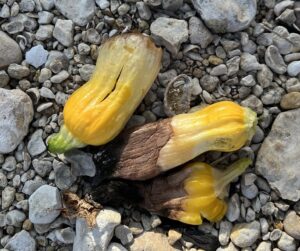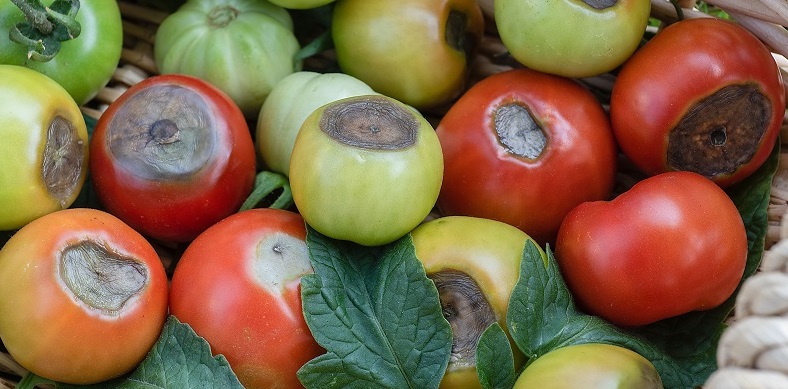If you have ever had the “blossom end” of a tomato turn black, you have experienced “blossom end rot”. Caused by cultural conditions, and NOT disease, this malady can affect tomatoes, peppers, squash, watermelon and eggplant. Researchers agree that it is caused by a calcium deficiency in the blossom end of the fruit (yes, these are technically fruits, as they are actually formed from the ovary of a flower!) Now, why there is a deficiency is the real question, as Central Texas soils and water supplies are seldom deficient in calcium.
Blossom-end-rot is a “physiological” disorder in which certain conditions prevent the translocation (or movement) of nutrients from the roots to the end of the fruit. When looking at which conditions would cause this, uneven soil moisture is usually to blame. The biggest culprit is moisture stress caused by letting the soil become too dry. If there is not enough water to reach the end of the fruit, the calcium will not be transported there either. Conversely, a soil which is kept too wet, or has received a lot of rainfall, results in root loss from anaerobic conditions (lack of oxygen). With this root loss, the plant is unable to uptake the water even though it is there, and there is no transport of calcium to the fruit.

By the time you see the effects of blossom-end-rot, the damage has already been done. The conditions which led to the disorder may have occurred several days or even weeks ago.
To avoid blossom-end-rot, maintain adequate moisture, locate the garden in well-drained soil, mulch the soil to reduce water loss, and fertilize with a “complete” fertilizer. If your soil actually IS low in calcium, adding gypsum (calcium sulfate) at a rate of 3-4#/100 sq. ft. annually, or ½ cup per transplant at the time of planting will alleviate the deficiency. Please be aware that Central Texas soils usually have sufficient amounts of calcium, and addition of gypsum should only be made on the basis of a reliable soil test.
The problem always seems worse than it is, as the first fruit to ripen is often the fruit effected. Actually, less than 10% of all fruit produced by an effected plant will be damaged. Simply remove the effected fruit and vow to be more consistent in watering!



